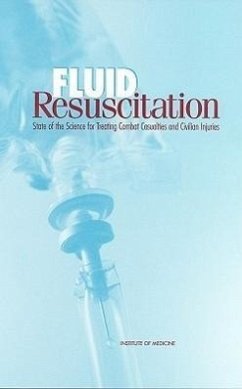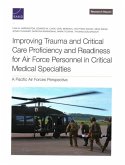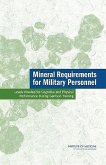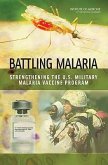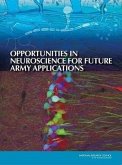Historically, 20% of all injured combatants die on the battlefield before they can be evacuated to a field hospital. Blood loss -- hemorrhage -- is the single major cause of death among those killed in action whose lives might otherwise be saved. Fluid resuscitation and the treatment of hypovolemia (the abnormally decreased volume of circulating fluid in the body) offer the greatest opportunity for reducing mortality and morbidity associated with battlefield casualties. In Fluid Resuscitation, an expert committee assesses current resuscitation fluids and protocols for the treatment of combat casualties and makes recommendations for future research. Chapters focus on the pathophysiology of acute hemorrhagic shock, experience with and complications of fluid resuscitation, novel approaches to the treatment of shock, protocols of care at the site of injury, and future directions for research. The committee explicitly describes the similarities and differences between acute medical care during combat and civilian emergency trauma care. Fluid Resuscitation should help energize and focus research in both civilian and military emergency care and help save the lives of citizens and soldiers alike.
Hinweis: Dieser Artikel kann nur an eine deutsche Lieferadresse ausgeliefert werden.
Hinweis: Dieser Artikel kann nur an eine deutsche Lieferadresse ausgeliefert werden.

